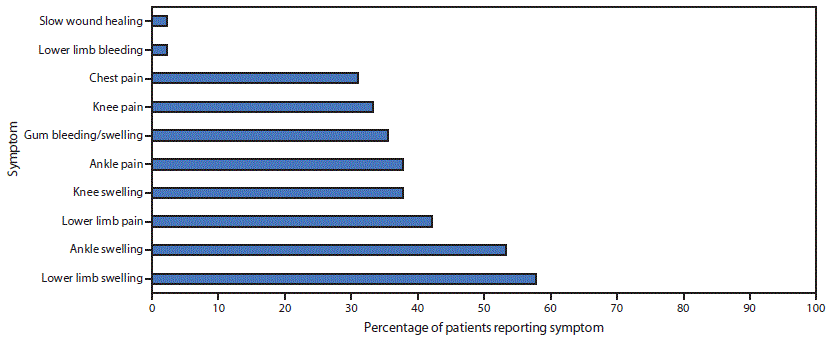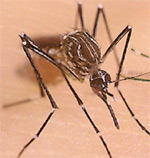Archive for the ‘Documents’ Category
“Zika has completely fallen off the radar, but the lack of media attention doesn’t mean it’s disappeared,” said Dr. Karin Nielson, a pediatric infectious disease specialist at U.C.L.A.
Wednesday, July 3rd, 2019Document:
Countries and territories with established Aedes aegypti mosquito vectors, but no known cases of Zika virus transmission:
AFRO
Benin; Botswana; Chad; Comoros; Congo; Democratic Republic of the Congo; Equatorial Guinea; Eritrea; Gambia; Ghana; Guinea; Kenya; Liberia; Madagascar; Malawi; Mali; Mauritius; Mayotte; Mozambique; Namibia; Niger; Réunion; Rwanda; Sao Tome and Principe; Seychelles; Sierra Leone; South Africa; South Sudan; Togo; United Republic of Tanzania; Zambia; Zimbabwe
32
AMRO/PAHO Uruguay 1 EMRO Djibouti; Egypt; Oman; Pakistan; Saudi Arabia; Somalia; Sudan; Yemen 8 EURO Georgia; Região Autónoma da Madeira – Portugal; Russian Federation; Turkey 4 SEARO Bhutan; Nepal; Sri Lanka; Timor-Leste 4
WPRO
Australia; Brunei Darussalam; China; Christmas Island; Guam; Kiribati; Nauru; Niue; Northern Mariana Islands (Commonwealth of the); Tokelau; Tuvalu; Wallis and Futuna
12
61
Canadian pandemic influenza preparedness
Monday, July 1st, 2019Abstract
Henry B on behalf of the Canadian Pandemic Influenza Preparedness Task Group. Canadian pandemic influenza preparedness: Public health measures strategy. Can Commun Dis Rep 2019;45(6):159–63. https://doi.org/10.14745/ccdr.v45i06a03
“Public health measures, also known as non-pharmaceutical interventions, are basic actions aimed at slowing the community spread of a communicable disease outbreak. In the event of an influenza pandemic, public health measures and antiviral drugs are the only tools available to mitigate the effects of the pandemic during the months before a vaccine becomes available. The Canadian Pandemic Influenza Preparedness: Planning Guidance for the Health Sector (CPIP) outlines how federal, provincial and territorial governments will work together to ensure a coordinated and consistent health sector approach to pandemic influenza preparedness and response.
This article summarizes Canada’s pandemic public health measures strategy, as described in the recently updated CPIP Public Health Measures Annex. The strategy builds on lessons learned during the 2009 H1N1 pandemic.
Key elements of the public health measures strategy include individual measures (e.g. hand hygiene, self-isolation when ill), community-based measures (e.g. school closures, cancellation of mass gatherings), management of cases and close contacts, travel and border-related actions and public education. Factors that influence the effectiveness of public health measures in a pandemic include the pandemic epidemiology, timing of implementation, how the measures are used (i.e. alone or in combination), their scalability and flexibility and public compliance. The CPIP is an evergreen guidance document and the Annex will be updated as new information warrants.”
Sahel: Humanitarian Emergency
Saturday, June 29th, 2019“…..UN aid agencies and NGOs warned today that surging armed violence in the Sahel has propelled forced displacement and humanitarian emergency to unprecedented levels. They called for stepped-up support and greater efforts to address the causes of the region’s crises.
In the past year, around 1 million people had to flee their homes due to insecurity and violence. In Burkina Faso, Mali and western Niger displacement has increased five-fold, and the Lake Chad Basin is witnessing a new spike in displacement and attacks. Across the Sahel, 4.2 million people are uprooted…..”
HUMANITARIAN EMERGENCY AT UNPRECEDENTED LEVEL IN SAHEL
Dakar, 27 June 2019 – UN aid agencies and NGOs warned today that surging armed violence in the Sahel has propelled forced displacement and humanitarian emergency to unprecedented levels. They called for stepped-up support and greater efforts to address the causes of the region’s crises. In the past year, around 1 million people had to flee their homes due to insecurity and violence. In Burkina Faso, Mali and western Niger displacement has increased five-fold, and the Lake Chad Basin is witnessing a new spike in displacement and attacks. Across the Sahel, 4.2 million people are uprooted.
“The impact of the crisis, in one of the world’s most vulnerable regions, is dramatic. The extent and intensity of the attacks have left communities suffering untold devastation,” said Chris Nikoi, Regional Director of the World Food Programme. “Millions of people have yet to recover from last year’s food and nutrition crisis. With the lean season underway, we must provide quick and sustained help to save lives and avert a deeper crisis.”
The violence is disrupting livelihoods and deepening the impact of chronic vulnerabilities such as food insecurity, malnutrition and epidemics in affected communities in Burkina Faso, Cameroon (Far North), Chad, Mali, Niger and north-east Nigeria. More than 7 million people are struggling with food insecurity. Malnutrition is threatening the lives of 5 million children. Education has been significantly hit, with more than 4,000 schools closed or not functional and 900,000 pupils affected.
“With armed violence comes destitution and deprivation. We must safeguard the dignity of people affected by conflict and ensure their protection from threats, exploitation and abuse,” said Liz Ahua, the UN Refugee Agency (UNHCR) Regional Representative for West Africa. “Beyond the humanitarian response, the Sahel needs support to tackle the root causes of the recurrent crises besetting the region. Crucially, the Sahel needs more robust investment in public services, infrastructure and economic development to bring about lasting solutions for all its people.”
Although conflict and its devastating impact have plagued the Sahel for many years, insecurity has never spread so fast, in such vast areas and affected as many people. The risk of spill-over beyond the Sahel and into coastal countries is growing.
“Humanitarian access continues to be under threat. Insecurity and restrictions imposed during military operations hinder the delivery of aid. Faced with these difficulties, we must insist on humanitarian principles. We are there to stay and assist the affected communities wherever they are,” said Marianne Irion, Regional Director of the Norwegian Refugee Council.
“If we want to reverse the trend in the Sahel, the security-centric focus must change,” said Mamadou Diop, Regional Director of Action Contre la Faim. “We must ensure people’s access to basic services, especially in the conflict-affected areas, where needs are outpacing available resources. And we need flexible funding to build resilience and address the root causes of the crises.”
The humanitarian community has requested for US$ 2.4 billion to assist 15.3
The humanitarian crisis in Yemen continues…..Yemen Snapshots: 2015-2019
Friday, June 21st, 2019Crisis In Yemen : Document 2019
“…….The Scale of the Conflict:
- ACLED (Armed Conflict Location & Event Data) records over 91,600 total reported fatalities from the start of 2015 to the present
- Approximately 17,100 were reported in 2015; 15,100 in 2016; 16,800 in 2017; 30,800 in 2018; and 11,900 in 2019 thus far
- More than 39,700 conflict events have been reported since the start of 2015
- Approximately 7,700 in 2015; 8,700 in 2016; 7,900 in 2017; 10,200 in 2018; and 4,900 in 2019 thus far
- Overall, 2018 is the war’s deadliest and most violent year on record
Impact on Civilians:
- ACLED records nearly 4,500 direct civilian targeting events resulting in approximately 11,700 reported civilian fatalities since 2015
- Approximately 4,500 reported fatalities in 2015; 2,200 in 2016; 1,900 in 2017; 2,400 in 2018; and 600 in 2019 thus far
- 2015 is the deadliest year for direct anti-civilian violence on record, with almost twice the number of reported fatalities recorded during 2018, the second-most lethal year
- The Saudi-led coalition and its allies remain responsible for the highest number of reported civilian fatalities from direct targeting, with over 8,000 since 2015…..”
The Third Plague Pandemic
Wednesday, June 5th, 2019The Third Plague Pandemic in Europe
“……The Third Plague Pandemic originated in the Yunnan region of southwest China, where plague caused multiple outbreaks since 1772 [15–17]. In 1894, plague reached Canton and then spread to Hong Kong, where Alexandre Yersin identified the bacterium.It was then carried by ships to Japan, Singapore, Taiwan and the Indian subcontinent [18,19]. Over the next few years, plague spread to many cities around the world: Bombay, Singapore, Alexandria, Buenos Aires, Rio de Janeiro, Honolulu, San Francisco and Sidney, among others [20]. The earliest known European cases occurred in September and October 1896, when two sailors from Bombay died of plague on ships docked in London on the Thames [21]…….There were 1692 cases and 457 deaths from plague reported in Europe between 1899 and 1947 (figure 1; electronic supplementary material, table S1), with the largest number of cases in the years 1899 and 1920. Cases were geographically widespread, although they were primarily found in coastal or inland port cities (figure 2). Plague was reported in 11 countries, and many cities, including Lisbon, Marseille, Paris and Pireas, experienced multiple outbreaks…….”

Charting an Ethical Course in Providing care Within Global Areas of Conflict
Wednesday, May 1st, 2019Ethical Challenges in Humanitarianism during Violent Situations
Reality Makes Our Decisions: Ethical Challenges in Humanitarian Health in Situations of Extreme Violence
Report and recommendations: a collaboration among Center for Public Health and Human Rights, Center for Humanitarian Health, Johns Hopkins Bloomberg School of Public Health | International Rescue Committee | Syrian American Medical Society
“…….The ethical principles include respect for persons (i.e., respect for human dignity and for individuals’ autonomous choices), beneficence (the promotion of others’ well-being), non-maleficence “do no harm”, and justice (in both fair distribution of resources and fair processes for decision-making). These four principles, can be adapted to the provision of health care to communities, though how the principles are weighed and applied might differ…..”
WHO Humanitarian Crisis Response Plans: 2018. How successful was it and what about 2019?
Wednesday, January 30th, 2019The WHO Humanitarian Response Plans for 2018 are based on rigorous assessment and analysis of need in 26 countries. The plans include an overview of the situation, WHO’s objectives to address the health aspects of the crisis, and the funds that will be required to do so. They form part of the overall humanitarian response plans developed by partners in the wider humanitarian response.
Reviewing 2017 • In 2017, humanitarian agencies reached more people in need than ever before: tens of millions of them, saving millions of lives; • Donors provided record levels of funding to Humanitarian Response Plans—nearly $13 billion by the end of November; • Humanitarian agencies helped stave off famines in South Sudan, Somalia, north-east Nigeria and Yemen, through effective scale-up and the rapid release of funds by donors; • Agencies stepped up to provide rapid assistance to refugees fleeing violence in Myanmar; and • Mobilized to support countries in the Caribbean to prepare for and respond to successive hurricanes of a ferocity rarely seen before. • Despite conflict and other constraints complicating the provision of assistance, plans were implemented effectively, with costs averaging approximately $230 a year per person for essential needs.
In 2018 • Conflict will continue to be the main driver of humanitarian needs. • Protracted violence will force people to flee from their homes, deny them access to enough food, and rob them of their means of making a living. • Droughts, floods, hurricanes and other natural disasters will also create humanitarian needs. Although the risk of El Niño or La Niña is low next year, some scientists forecast an increased risk of earthquakes in 2018. • In a number of countries, humanitarian needs will fall, but still remain significant, including Afghanistan, Ethiopia, Iraq, Mali, and Ukraine. • However, needs are rising substantially in Burundi, Cameroon, Central African Republic, the Democratic Republic of the Congo, Libya, Somalia and Sudan. • And needs will remain at exceptionally high levels in Nigeria, South Sudan, the Syria region, and Yemen, which is likely to remain the world’s worst humanitarian crisis. • Overall, 136 million people across the world will need humanitarian assistance and protection. • UN-coordinated response plans costed at $22.5 billion can help 91 million. • The overall number of people in need is more than 5% higher than in the 2017 GHO. The cost of the response plans sets a new record, about 1% higher than at the start of 2017. • Humanitarian agencies will become more effective, efficient and cost-effective. They will respond faster to crises, in a way more attuned to the needs of those they are trying to help. They will undertake more comprehensive, cross-sectoral and impartial needs assessments. They will also contribute more to long-term solutions by working more closely with development agencies. • Larger country-based pooled funds will improve the agility and prioritised use of funds in the places where they operate. An expanded Central Emergency Response Fund will better support the least-funded major crises.
PEOPLE IN NEED PEOPLE TO RECEIVE AID 135.7M 90.9M
FINANCIAL REQUIREMENTS $22.5B
Scurvy Outbreak Among South Sudanese Adolescents and Young Men
Monday, January 28th, 2019
Ververs M, Muriithi JW, Burton A, Burton JW, Lawi AO. Scurvy Outbreak Among South Sudanese Adolescents and Young Men — Kakuma Refugee Camp, Kenya, 2017–2018. MMWR Morb Mortal Wkly Rep 2019;68:72–75. DOI: http://dx.doi.org/10.15585/mmwr.mm6803a4.\
“…..Severe vitamin C deficiency causes scurvy, a disease that is mainly associated with long sea voyages and naval expeditions until the 19th century. Scurvy manifests itself 2-3 months after consuming a diet lacking of vitamin c; it is characterized by multiple haemorrhages and, left untreated, is fatal. In the past decade, several refugee populations that were wholly dependent on food aid have developed scurvy…..”
“……A disease caused by prolonged severe dietary deficiency of ascorbic acid, in which the breakdown of intercellular cement substances leads to capillary haemorrhages and defective growth of fibroblasts, osteoblasts, and odontoblasts results in impaired synthesis of collagen, osteoid, and dentine; it is characterized by haemorrhagic gingivitis affecting especially the interdental papillae (in the absence of teeth, the gums are normal), subperiosteal haemorrhages, bone lesions (including the corner fraction sign, a ground-glass appearance, and trabecular atrophy) seen on radiography, perifollicular haemorrhages, and frequently petechial haemorrhages (especially on the feet). Sudden death may occur as a result of cerebral or myocardial haemorrhage. Megaloblastic anaemia, usually due to concomitant iron and/or folate deficiency, is usual. The early manifestations include weakness, lethargy, myalgia, and arthralgia. In the infantile form (in which onset usually occurs in the second 6 months of life), gingival involvement is minimal and the infant assumes a ‘frog-like’ position and does not move its legs (owing to the intense pain of subperiosteal haemorrhages). In the adult form there are intraarticular and intramuscular haemorrhages, and osteoporosis may occur. The disorder may occur in infants born to mothers who are consuming large doses of ascorbic acid, and in adults following the abrupt discontinuation of large supplemental doses (despite relatively normal dietary intake of ascorbic acid).
Source: International nomenclature of diseases. Vol. IV Metabolic, nutritional, and endocrine disorders. Geneva, World Health Organization, 1991, p. 283……”
WHO-Scurvy Primer: Document
“……Manifest scurvy in adults is preceded by a period of latent scurvy whose early symptoms include lassitude, weakness and irritability; vague, dull aching pains in the muscles or joints of the legs and feet; and weight loss. Shortness of breath may also occur and the skin can become dry and rough. The principal signs and symptoms of manifest scurvy in adults consist of follicular hyperkeratosis, haemorrhagic manifestations, swollen joints, swollen bleeding gums, and peripheral oedema (Hodges et al., 1971). Anaemia of a variable degree occurs with scurvy in a certain percentage of adults and infants, which is considered to be due in part to undernutrition and intercurrent infection. However, it is due chiefly to the effect of vitamin C on blood formation, folic acid metabolism, and bleeding.
In children the syndrome is called Moeller-Barlow disease, and is seen in non-breast-fed infants usually at about 5-6 months of age when maternally derived stores of vitamin C have been exhausted. No single symptom predominates, but the majority of infants with scurvy eventually show signs of irritability, tenderness of the legs, and pseudo paralysis, usually involving the lower extremities. The “pithed-frog” position—legs flexed at the knees and hips partially flexed—is assumed by approximately half the sufferers. Involvement of the costochondral junctions is very common, and costochondral beading is found in 80% of infants with scurvy. Haemorrhage around erupting teeth is consistently present. Petechial haemorrhages in the skin may occur (10 -15% of infants with scurvy). Left untreated, scurvy in any age group can lead to death……”
North Korea: “advanced, underestimated and highly lethal” bioweapons program.
Friday, January 18th, 2019“…..But today, analysts say, the gene revolution could be making germ weapons more attractive. They see the possibility of designer pathogens that spread faster, infect more people, resist treatment, and offer better targeting and containment. If so, North Korea may be in the forefront.
South Korean military white papers have identified at least ten facilities in the North that could be involved in the research and production of more than a dozen biological agents, including those that cause the plague and hemorrhagic fevers…..”
The Marjory Stoneman Douglas High School Public Safety Commission criticizes the response of school staff and the Broward County Sheriff’s Office and recommends arming teachers
Sunday, January 13th, 2019Parkland Stoneman Douglas Commission Report
“….The commission’s 15 members issued a unanimously approved, 439-page preliminary report Wednesday aimed at preventing similar attacks and improving the response should they occur. …..”
In memory of:
Alyssa Alhadeff Scott Beigel Martin Duque
Nicholas Dworet Aaron Feis Jaime Guttenberg
Chris Hixon Luke Hoyer Cara Loughran
Gina Montalto Joaquin Oliver Alaina Petty
Meadow Pollack Helena Ramsay Alex Schachter
Carmen Schentrup Peter Wang




